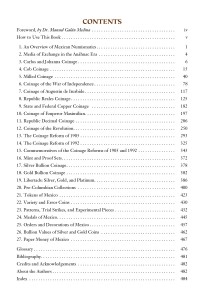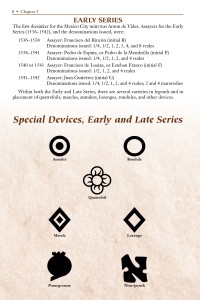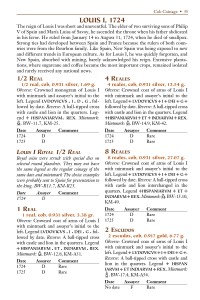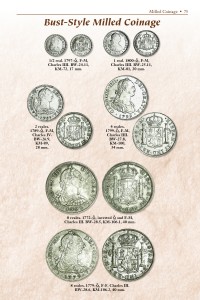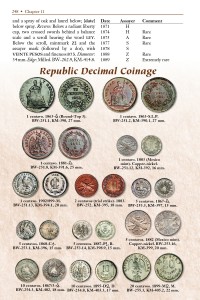Feb 6, 2015 | bullion, coins, commemorative, commentary, gold, policy, silver, US Mint
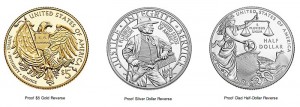
Reverse of the 2015 US Marshal Service 225th Anniversary Commemorative Coins
Time and again, we hear that congress wants the government to save money. They want agencies to reduce costs and build efficiencies. How can agencies save money when members of congress introduce legislation that is counter to those goals?
Congress has been told that the U.S. Mint could save money if they standardized gold coins to 24-karat coins and silver to at least .999 fine quality. Aside from making the coins more attractive to more buyers including investors, the U.S. Mint does not have to pay more for someone to “dirty” the metals to create planchets that contain 90-percent of the metals.
Modern manufacturing methods are geared to process mined metals to create purer metals. In order for the gold or silver to be used to make the 90-percent alloy, it has to be dirtied with another metal, such as copper, before creating the planchets. While it makes the metals cheaper, the process increases the costs per planchet because of the extra work involved.
Congress exasperates this problem by not listening to the U.S. Mint and doing a virtual copy-and-paste from previous bills that says $5 gold commemoratives be made from 90-percent gold and silver dollars from 90-percent silver.
Rather than listening to the U.S. Mint, Rep. Sean Maloney (D-NY), or a non-responsive staffer in his office, did a copy-and-paste of previous commemorative bills to introduce the National Purple Heart Hall of Honor Commemorative Coin Act (H.R. 358) that calls for a 90-percent gold $5 coin and a 90-percent silver dollar.
Regardless of how one feels about the use of commemorative coins for fundraising, if congress is going to authorize a commemorative coin, why not allow the U.S. Mint to take advantage to more efficient manufacturing and stop making them dirty the metals?
It is possible that if the U.S. Mint could create commemorative coins worthy of being on par with investor grade coins, not only could they save money in the manufacturing process which could lower the costs of the coins, but they could sell more coins. If the U.S. Mint sells more coins they could collect more of the surcharges to benefit their intended causes.
If congress really cared about saving money and increasing efficiency in the government, members like Rep. Maloney will look beyond rhetoric and actually do something, no matter how simple it is.
Up next, why some members of congress should leave well enough alone!
Image courtesy of the U.S. Mint.
Jan 21, 2015 | commentary
 Sometimes it is difficult to separate the world from numismatics.
Sometimes it is difficult to separate the world from numismatics.
Numismatics has always been the ultimate expression of politics and history. Governments, which control the currency they release, decide what images are imprinted on their coins and currency and how they appear. People may argue over those depictions but in the end, they are the images that last.
Victors commemorate their triumphs on coins and currency.
Losers ignore those eras as if they did not exist. Sometimes, they even pass laws that makes those previous thoughts illegal as they have in Germany and Canada with regard to World War II.
We here in the United States cherish our freedoms. Freedom of speech and expression are a hallmark of our society. Even if the speech is disagreeable, the right to be wrong is as strongly protected as any other expression in our society.
I am able to write about numismatics and have the freedom to criticize the government on how it treats the hobby because of those freedoms.
Because this is not supposed to be a political blog I hesitated to comment on the shootings that occurred in Paris at the satirical newspaper Charlie Hebdo. But as a member of the world community whose blog is read in 22 countries (according to my logs), I want to extend my condolences to the people of France who lost loved ones for either being someone expressing their opinions as satyr or being in the wrong place at the wrong time. I apologize for the delay because it is a bit off topic.
Countries use coins and currencies as their vehicle for expression, I use this blog. We cannot ignore the power of the written word or the privilege of freedom.
Je suis Charlie!
Dec 30, 2014 | coins, commemorative, commentary, legislative, policy, US Mint
And now, the end is near
And so I face the final curtain.
My friend, I’ll say it clear
I’ll state my case, of which I’m certain. . .
 As we wind down the end of a very interesting 2014, we also come to the end of the 113th Congress. This congress has been as inactive as any. Sure, there was a lot of press with faces from both sides spewing scary rhetoric about topics these people seem to know little about, but even when it comes to coining money, they have done less than any congress in recent memory.
As we wind down the end of a very interesting 2014, we also come to the end of the 113th Congress. This congress has been as inactive as any. Sure, there was a lot of press with faces from both sides spewing scary rhetoric about topics these people seem to know little about, but even when it comes to coining money, they have done less than any congress in recent memory.
Other than the passing the budget bill nicknamed “CRomnibus,” the 113th Congress passed only three bills that made it to the President’s desk. President Obama signed all three bills.
Bills Signed Into Law
- Public Law 113-10 (formerly H.R. 1071: To specify the size of the precious-metal blanks that will be used in the production of the National Baseball Hall of Fame commemorative coins. This was a technical change in the law that changed how the size of the planchet was determined that were not able to be considered when the law was introduced. This bill was signed into law by the President on May 17, 2013.
- Public Law 113-212 formerly H.R. 2366): The World War I American Veterans Centennial Commemorative Coin Act requires the Secretary of the Treasury to mint coins in commemoration of the centennial of World War I. In 2018, the U.S. Mint will strike not more than 350,000 silver dollar coins “emblematic of the centennial of America’s involvement in World War I.” The $10 per coin surcharge will be paid to the U.S. Foundation for the Commemoration of the World Wars to assist the World War I Centennial Commission in commemorating the centenary of World War I. This bill was signed into law by the President on December 16, 2014.
- Public Law 113-288 (formerly H.R. 2754: the Collectible Coin Protection Act. As I previously explained, this law enhances the Hobby Protection Act by allowing law enforcement and other legal actions against distributors and handlers of counterfeit coins and grading service holders. President Obama signed this bill into law on December 19, 2014.
Bills Passed by the House of Representatives
The following bill was passed by the House of Representatives but died in committee in the Senate.
- H.R. 2866: Boys Town Centennial Commemorative Coin Act
Bills Introduced in the House of Representatives
These are the bills that were introduced in the House of Representatives but died in the various committees. While it may not be apparent from the titles, all of these bills have some impact on the coinage that would be produced by the U.S. Mint:
- H.R. 77: Free Competition in Currency Act of 2013
- H.R. 220: Stop the Coin Act
- H.R. 627: National Park Service 100th Anniversary Commemorative Coin Act
- H.R. 1218: Commemorative Coins Reform Act of 2013
- H.R. 1653: Pro Football Hall of Fame Commemorative Coin Act
- H.R. 1719: Cents and Sensibility Act
- H.R. 1905: Mother’s Day Centennial Commemorative Coin Act
- H.R. 2366: World War I American Veterans Centennial Commemorative Coin Act
- H.R. 2633: Thirteenth Amendment Commemorative Coin Act
- H.R. 2760: Panama Canal and Pan-Pacific Exhibition Centennial Celebration Act
- H.R. 2932: United States Coast Guard Commemorative Coin Act
- H.R. 3146: Savings, Accountability, Value, and Efficiency (SAVE) II Act
- H.R. 3305: Currency Optimization, Innovation, and National Savings Act
- H.R. 3680: Breast Cancer Awareness Commemorative Coin Act
- H.R. 3729: Korean Immigration Commemorative Coin Act
Bills Introduced in the Senate
Coinage bills are considered revenue bills because they earn the federal government money and are used to raise funds that are paid by the government to public and private organizations. Even though the United States Constitution requires revenue bills to begin in the House of Representatives, it is not beneath the Senate to introduce their own legislation. Sometimes, senators introduce concurrent bills—bills that are similar to the one introduced in the House as a mechanism to get one of them passed. These are the bills that were introduced in the Senate that died in committee:
- S. 94: To terminate the $1 presidential coin program
- S.203: Pro Football Hall of Fame Commemorative Coin Act
- S. 768: Sound Money Promotion Act
- S. 1011: Boys Town Centennial Commemorative Coin Act
- S. 1105: Currency Optimization, Innovation, and National Savings Act
- S. 1158: National Park Service 100th Anniversary Commemorative Coin Act
- S. 1842: Pro Football Hall of Fame Commemorative Coin Act
- S. 2303: United States Coast Guard Commemorative Coin Act
- S. 2310: Mother’s Day Commemorative Coin Act
With that, we close the books on the 113th Congress.
Nov 6, 2014 | bullion, coins, commentary, gold, US Mint
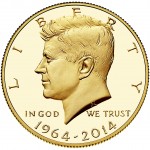 Every Thursday morning, the U.S. Mint looks at the afternoon London Fix price of gold and adjust their bullion-related coins based on their published tables. This morning, the U.S. Mint adjusted prices after noting that the afternoon London Fix priced gold at $1,145.00 per troy ounce. Based on the table published in the Federal Register, the price of the 50th Anniversary Kennedy 2014 Half-Dollar Gold Proof Coin was reduced to $1,165.00!
Every Thursday morning, the U.S. Mint looks at the afternoon London Fix price of gold and adjust their bullion-related coins based on their published tables. This morning, the U.S. Mint adjusted prices after noting that the afternoon London Fix priced gold at $1,145.00 per troy ounce. Based on the table published in the Federal Register, the price of the 50th Anniversary Kennedy 2014 Half-Dollar Gold Proof Coin was reduced to $1,165.00!
Please pardon me as I laugh at all of those dealers whose questionable ethics caused despicable scenes in Philadelphia, Washington, Denver, and Rosemont at the ANA World’s Fair of Money when the introduction price was $1,240. Those who have waited to order the coin directly from the U.S. Mint for a coin that does not have a mintage limit will have saved $75 from the issue price. And by buying from the U.S. Mint, you do not have to pay the alleged “numismatic premium” dealers will apply for the special label encased on the plastic they paid to have the coin entombed in.
Regardless of what the politicians say, some business pundits recognize that the economy is moving forward and the stronger dollar will continue to push prices lower.
If the price of gold drops below $1,100 by next Wednesday afternoon’s London Gold Fix, the price of the Kennedy gold halves will drop to $1,127.50. If that happens, I will be back to laugh even more!
Oct 31, 2014 | ANA, CCAC, coin design, coins, commemorative, commentary, gold, halves, medals, policy, silver, US Mint
 It has been a few years since I did an All-Hallows-Eve numismatic trick-or-treat that it seems like a good time to do add one. Here are my numismatic tricks and treats for this past year.
It has been a few years since I did an All-Hallows-Eve numismatic trick-or-treat that it seems like a good time to do add one. Here are my numismatic tricks and treats for this past year.
Girl Scouts need a values adustment
TRICK: It was announced in January that the 2013 Girl Scouts commemorative coin did not generate enough sales for the U.S. Mint to provide a payout of seignorage. This is the first time this has happened. Part of the problem was that the Girl Scouts are stuck in the 1950s mindset that does not see collecting coins as a girl’s hobby. Although values are important, this shows that he Girl Scouts’ values are behind the times and will not be the catalyst behind helping expand the hobby. They should be ashamed for contributing to this failure.
ANA Willfully Gives up its Premier Status
TRICK:The Professional Numismatists Guild and the American Numismatic Association announced in January that “the first” PNG-ANA Numismatic Trade Show the weekend prior to the 2014 World’s Fair of Money in Rosemont that it will be open to the public. While making it sound exciting it made the entire show 8-days long. This was a bad move because of the length and because it makes the ANA play second to PNG. If the ANA wants to be the premier numismatic organization, the one that anyone wanting to learn about and be about numismatics, The ANA should not play second fiddle to any other organization.
There are coin treats!
TREAT:In creating a tribute to the 50th anniversary of the Kenney half-dollar, the U.S. Mint has made a coin that is not really circulated into something interesting for the collector. The dual-dated gold coin became an instant hit before the price of gold dropped and the silver sets are reportedly selling well. This was a good move by the U.S. Mint.
TREAT:For the most part, commemorative coins are sales do not meet expectation. While there are a few exceptions like 2005 Marine Corps 230th Anniversary silver dollar, most commemoratives do not come close to their maximum mintage. But the 2014 National Baseball Hall of Fame commemoratives appear to have hit a home run. The combination of the subject and the curve of the coin may be a significant factor in the coin’s success. The $5 gold and silver dollar coins are both sold out. There are some of the clad half-dollars available.
TREAT:Speaking of cool stories, what about the Saddle Ridge Hoard? After a couple found the hoard of gold coins while walking their dog, it spawned an interest in metal detectors and searching for buried treasure. It was such an amazing story that it even found its way into the national news cycle. But like everything else, another shiny story diverted the media’s attention and the coins went on sale to the general public on Amazon.com.
Not all coins are treats
TRICK: Colored and coins with gimmicks are proliferating in the market. So far, the U.S. Mint and the Royal Mint are resisting colored and other gimmicks while the Royal Candian Mint and New Zealand Mint are at a race to the bottom for gimmick coins.
Numsimatics and technology
TREAT: The ANA launched its new website with new technology ready for growth on time and under budget. This is the website that ANA Governor Laura Sperber said, “I can’t wait to see what a disaster the ANA new web site will be.” So far, there has not been a follow up from Sperber while the new site has been a success.
TREAT: More recently, the U.S. Mint had a great launch to their new website. After years of frustration with the online ordering of what would be popular items, the new site handled the launch of the 50th Anniversary Kennedy 2014 Half-Dollar Silver Coin Collection with no issues.
Failure to launch
TRICK: The U.S. Mint launched the Baseball Hall of Fame commemorative coin at the Whitman Show in March not anticipating its popularity with fewer coins that there was a demand. It was as if the U.S. Mint had a blind spot with how popular this coin would be.
TRICK: The dealers who paid less than desireable people uninterested in anything other than a quick buck to mob the lines at the Denver Mint and the World’s Fair of Money. I continue to belive that their ethics must be questioned and appropriate actions taken by the ANA even though I do not think that will happen.
TREAT: With the drop in the price of gold, the current price of the gold Kennedy half-dollar tribute is less than what is was at launch. Teach these greedy dealers a lesson and buy the coins for less directly from the U.S. Mint!
U.S. Government hands out coal
TRICK: Because the U.S. Mint can only do what the laws that congress pass tells them they can do and congress is so dysfunctional they cannot even pass laws for issues they agree on, the United States was the only country involved with the Allies on D-Day NOT to issued a commemorative to honor the 70th anniversary of D-Day.
TRICK: In the name of political correctness, the State Department’s Cultural Property Advisory Committee (CPAC) continues to make it difficult for ancient coin collectors to participate in its hobby by allowing countries to ask the State Department to overreach on the enforcement on the Cultural Property Implementation Act. It is turning ancient coin collectors into criminals even for collecting common coins. Their actions are rediculous.
CCAC is the CCAC
TREAT: The Citizens Coinage Advisory Committee suggested creating American Arts medals that will feature the artistic ability of the U.S. Mint’s artist.
TRICK: The arts medals are medals, not coins. Even with the beauty of medals like the 9/11 silver medal, it did not sell like coins would. In fact, it grossly under performed without raising significant sums for the 9/11 Memorial at the site of the Twin Towers in New York. But this is what the CCAC is face with because of congressional dysfunction (see above).
So goodbye everybody, and remember the terrible lesson you learned tonight. That grinning, glowing, globular invader of your living room is an inhabitant of the pumpkin patch, and if your doorbell rings and nobody’s there, that was no Martian… it’s Hallowe’en.
— Orson Welles, The War of the Worlds, CBS Radio, October 30, 1938

Hobo Ike and Jefferson courtesy of Darth Morgan posted at
Coin CommunityOct 25, 2014 | coins, commentary, ethics, grading
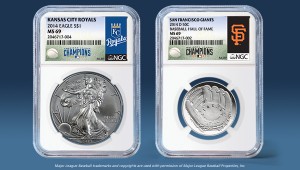 Fans of coins encased in plastic with special labels who also are baseball fans must be ecstatic that Fans of coins encased in plastic with special labels who also are baseball fans must be ecstatic that Numismatic Guarantee Corporation and Major League Baseball agreed to an exclusive deal that will allow NGC to reproduce team names, logos, and stadiums on labels used in NGC slabs.
Fans of coins encased in plastic with special labels who also are baseball fans must be ecstatic that Fans of coins encased in plastic with special labels who also are baseball fans must be ecstatic that Numismatic Guarantee Corporation and Major League Baseball agreed to an exclusive deal that will allow NGC to reproduce team names, logos, and stadiums on labels used in NGC slabs.
NGC announced that they will “encapsulate the National Baseball Hall of Fame commemoratives and other legal tender coins with attractive certification labels that feature a range of popular MLB trademarks.” Aside from the Major League Baseball logo, the logos of the 30 clubs, and stadium images, it will also include logos of All-Star Game and those used for post season.
NGC says this is gives their customers “an exciting new opportunity to combine their passions for the sport and the hobby.” What it gives is NGC a new area for marketing and to extract money from the market.
I understand that NGC is a business and has owners that are concerned about the business generating revenues. But what this will do is increase their revenues at the risk of some of the protections they claim is good for the hobby by encouraging cracking slabs, thus making the population reports even less reliable than they are today.
Let’s consider that I am one of those odd people that happens to collect the coin but it happens to be in a slab to ensure that it is genuine and the grade is something agreeable. This is a really nice coin and it fits in with my collection. But the coin happens to be in a slab with the logo of the New York Yankees. I hate the Yankees. I despise the Yankees. I have hated the Yankees ever since my father, the Brooklyn Dodgers fan, taught me to say “Let’s Go Mets!”
Unlike the fans of plastic, I really consider the coin encased in the slab. It is possible that I may like a coin even with the consequence that the label inside that slab has a decoration I am allergic to. If I decide that the coin is worth purchasing even if I ignore the label, I will buy the coin, but that label will have to go. There is no question that when I bring the coin home, the slab will be cracked, the coin removed, and the label finding its way to an appropriate disposal fitting of my opinion of that team.
Once cracked out of the slab, I could send it back to NGC and just have them re-grade the coin an put it in a plain slab. I could send it to Professional Coin Grading Service to see if they will give me a more solid grade. If it is a Morgan dollar I can ask ANACS to attribute the VAM. I could also ust keep it as a raw coin. Since the vast majority of my collection is not slabbed, this is not a problem. Besides, I know it is genuine because NGC slabbed it and I could submit it later if I need it slabbed again for resale.
Frankly, how many people actually save the labels and report their crack outs to the grading services? In the few cases when I have cracked coins out of its plastic tomb, I have not reported the cracked out coin to NGC. They have been cracked out of the slabs from multiple companies and submitted to NGC at a time I was working on a registry set. I believe this will encourage cracking out of the slab and make the population reports less reliable than they are today.
Not only will this affect the grading service population reports but it could affect coins with Certified Acceptance Corporation stickers. My hatred of the Yankees will not have me think twice about cracking that plastic just because the CAC or anyone else put a sticker on the slab. If I am not telling NGC I obliterated their label, I am not reporting it to CAC either—especially since I am not exactly a fan of CAC.
I do not begrudge NGC for doing what they need to do to earn a living. But they need to explain how these gimmicks align with their uncompromising standards and a commitment to integrity. Just admit that these gimmicks are being used to improve revenues and that everything else is window dressing. I would respect the honesty.
Image courtesy of NGC.
Oct 23, 2014 | coins, commentary, education, medals, tokens
Advancements in all areas of life, whether it is the cars we drive, the entertainment that we like, how we shop, and where we get our news are inevitable. Where the car I drove in college had a the classic Chrysler Slant 6 engine with nothing electronic, I now drive a Chevy pickup with a Vortec V8 with variable timing controlled by a computer that will even start with the push of a button on my key fob.
Rather than complain about these changes, I try to embrace them as progress. After all, I started programming computers by punching cards in the 1970s. Today, the smartphone in my pocket has more computing power than anyone could have imagined while feeding our cards through the reader waiting for output on green bar paper.
Because I like to be progressive with technology and feel that not only have I seen a lot but that I adjusted, I tend to look down on those who cannot. I know that it may be elitist and contemptuous on my part and I should be more understanding, especially now that I bought a car with a Slant 6 as a toy and want another car without all of the electronics.
This self examination was prompted by an article by Q. David Bowers that appeared online on the Coin World website. In the article, Bowers reflects back as to how the hobby has changed since he started writing his column in 1961 and what it is today.
Basically, you used to have to know more about numismatics. You had to know what you were looking at in order to grade coins, know where to find the prices, have the education to know what is fake and what is not, and have a trusted dealer that you can go to to help you with your collection. It was a lot like my Slant 6 in that while the dealer would help, I had to know more about the car in order to keep it running, especially as a poor college student.
Today, Bowers says it succinctly, “No knowledge is necessary!”
While this can help grow the hobby, it makes it just a bit colder. You do not need a dealer when the Internet will do. You do not need the knowledge when companies will entomb a coin in plastic, say it is genuine, and assign a grade so you know what its state of preservation is. If the plastic is not enough, you can even find someone to place a sticker on the plastic to bless that the plastic is good. Then the sticker placer will buy the plastic to churn the market that will essentially drive up the prices.
Although the grading services do provide a service that guarantees the coin’s authenticity, they have also created a fervor over plastic that caused the the despicable behavior during the launch of the Kennedy gold tribute coin.
“If you are typical, quality means nothing. The label on a holder takes care of everything,” writes Bowers. Sadly, he is right because people are no longer collecting coins. They are collecting plastic and stickers while watching online price guides the way day traders watch stock prices. If the coin does not raise in value fast enough, they will buy the next number higher on a plastic package even if the new coins does not look better than the old coin.
Just like listening to the whine of a hybrid takes the charm out of being a car enthusiast, plastic and stickers are taking the charm out of collecting.
To regain the charm Bowers suggests niche or specialty collecting. He says to, “Check out the websites of the Colonial Coin Collectors Club, Early American Coppers, the Liberty Seated Collectors Club and the Numismatic Bibliomania Society, and poke around!”
In addition to Bowers’ suggestions, you may also want to consider Token and Medals Society along with the regional chapters, The Elongated Collectors (TEC), and even the American Vecturist Association. What makes tokens, medals, and even elongated coins very interesting is that you can really personalize a collection. Think about it, how many places have you visited that had a machine where you drop in some money plus a “lowly” Lincoln cent and with a turn of a crank you have the equivalent of a numismatic post card!
A hobby should be fun. So forget the plastic and stickers and go find something and have some fun.
For a little fun, here is a sample of my “Hometown Collection.”
-

-
1984 LIRR Sesquicentennial Bronze Medal
-

-
TBTA Toll Token
-
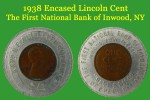
-
1938 Encased Cent from the First National Bank of Inwood (NY)
-

-
A check from the First National Bank of Inwood (NY)
-

-
Medal from the opening of the Brooklyn Bridge in 1883
-

-
1956-D Encased Cent from the Chase Money Museum
-
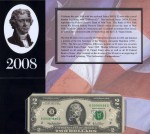
-
2008 $2 Single Note from the New York Fed
Oct 10, 2014 | coins, commentary, currency
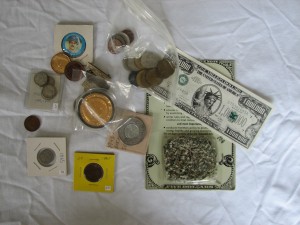 Collecting is a progressive addiction. It might start innocently with a friend introducing us to collecting and even giving us a few freebies. We dabble into buying more, especially items that tie us to our youth. We progress in collecting more from those childhood years putting together sets that we could not afford them. That feels pretty good, and soon we are tempted into expanding our collection into earlier and later years.
Collecting is a progressive addiction. It might start innocently with a friend introducing us to collecting and even giving us a few freebies. We dabble into buying more, especially items that tie us to our youth. We progress in collecting more from those childhood years putting together sets that we could not afford them. That feels pretty good, and soon we are tempted into expanding our collection into earlier and later years.
We get hooked on the high that comes from completing sets we only learned existed when we discover there are more cool items we never heard about before. We buy at flea markets, estate sales, from online classified advertisements, auctions, and dealers in cramped stores. Eventually, we are completely addicted and start bidding furiously on everything related to our collection including items in better condition than what we already have.
The collectors’ eyes start to glaze over as they move into progressive rounds of the addiction. Related collectibles appear on den and basement shelves. Second and third sets accumulate. Family members enable the addicts by covering up for them when they miss family events to visit yard sales or dealers instead. Soon the addicts are looking for obscure pieces and those one-of-a-kind items desired only by the select few who are as addicted.
This was adapted from a section in the article “
Baseball Cards: You Can’t Collect Everything, Right?.” When I read this in the section with the title “The signs of addiction” it was something that had to be applied to collecting in general. It is something to think about as we begin a three-day weekend!
Sep 23, 2014 | books, coins, commentary
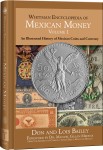 Most of the time I do not like repeating press releases or reporting on press releases. Press releases are written by or for the company issuing them. By design, they are written so that the announcement shows the company in a good light. I would rather use the product and report about it based on my own experience. But I am going to make an exception because of the long term implications.
Most of the time I do not like repeating press releases or reporting on press releases. Press releases are written by or for the company issuing them. By design, they are written so that the announcement shows the company in a good light. I would rather use the product and report about it based on my own experience. But I am going to make an exception because of the long term implications.
Whitman Publishing issued a press release to announce the release of the first volume of the Whitman Encyclopedia of Mexican Money, by Don and Lois Bailey. The first volume of a planned four-volume series starts the series with an overview and history of Mexican coinage and currency covers pre-Columbian money to the colonial era, the independence movement, revolutions, modern coinage reforms, commemorative programs, and silver, gold, and platinum bullion.
Numismatic Cataloging Systems
Krause-Mishler (KM#)
Created by: Chet Krause and Cliff Mishler Cataloging system of foreign coins, primarily used by the Krause Publications’ Standard Catalogs
PCGS
Created by: Professional Coin Grading Service PCGS maintains its own cataloging system for United States coins
Pick (P#)
Created by: Albert Pick Pick was a German notaphilist who developed a cataloging system for currency
VAM
Created by: Leroy Van Allen and George Mallis Developed by the authors in 1965 to catalog die varieties of Morgan and Peace dollars
Yeoman (Y#)
Created by: Richard S. Yeoman Original author of A Guidebook of United States Coins (The Red Book) developed a cataloging system primarily for Asian coins
Significant in the announcement is that this book introduces the cataloging of Mexican coinage with the Bailey-Whitman numbering system. The press release called this a comprehensive cataloging that is cross-referenced to “older systems.” Although I have not seen the actual book, page scans sent by Whitman as part of the press release shows that the older cataloging system being cross-referenced is the Krause-Mishler (KM) numbers used in Krause Publications’ Standard Catalog of World Coins.
Those of us who study and collect foreign coins have come to rely on KM numbers to help identify coins. The KM system has not only been unable to keep up with the proliferation of modern non-circulating legal tender coins (NCLT), especially from Canada, but is severely lacking when it comes to cataloging varieties.
Aside from omissions, the Standard Catalogs are riddled with errors that sometimes are never corrected. In the case of the Standard Catalog of World Paper Money, which is also known as the “Pick” catalog since it is organized by Albert Pick’s numbering scheme, it is so riddled with problems that Owen Linzmayer has produced his own catalog with better pictures and details called The Banknote Book. In fact, you can buy the book as a four-volume set or individual chapters representing different countries. I highly recommend Linzmayer’s books over all others. Go to banknotenews.com to learn more.
While I am not a collector of Mexican money, the sample pages provided by Whitman make the book look very compelling. It is difficult to review a book based on selected sample pages from the publisher, but it looks like something that could be used as a model for similar treatment of other countries. It would be nice to see similar books for Canadian, English, and Chinese coins.
If Whitman continues and provides comprehensive catalog information for other coins, it will be good for the industry. Between Whitman and Owen Linzmayer’s work, it should force Krause to fix their issues and provide better and more complete information to the collector. As we know, the more you know about your collection the better you enjoy collecting. This is why competition is good!
Click on any image to see the larger version.
All images courtesy of Whitman Publications.
Aug 13, 2014 | ANA, coins, commemorative, commentary, ethics, gold, shows, US Mint

From the raw video of people dashing across the street at the Denver Mint
The media reported that those waiting for to purchase the coins were not collectors. Most were being paid by dealers to be on the line in order to get around the U.S. Mint purchasing limits. As part of their attempt to game the system, these dealers put collectors and the general public in danger by handing large amount of cash to needy people who did not conduct themselves in a manner that is consistent with the ANA Code of Ethics. Since those behaving badly were being paid by the dealers, they are representatives of the dealers, making the dealers responsible for the action of those they employ.
In case those dealers have forgotten, according to the ANA Code of Ethics:
As a member of the American Numismatic Association, I agree to comply with the following standards of conduct:
- To conduct myself so as to bring no reproach or discredit to the Association, or impair the prestige of the membership therein.
This applies directly to the dealers whose action caused problems at the World’s Fair of Money. Since sales of the coin were made at the U.S. Mint’s booth on the bourse floor, this is a case where the dealers who participated in this discredited the Association by creating an environment that potentially jeopardized the security of the show. By putting the security in jeopardy and bringing this negative publicity to the World’s Fair of Money, the participating dealers impaired the prestige of the membership especially when they had to put the U.S. Mint and the ANA Executive Director in the position to have to act as a parent to dealers acting like impetuous children.
- To base all of my dealings on the highest plane of justice, fairness and morality, and to refrain from making false statements as to the condition of a coin or as to any other matter.
Although the launch of the 2014 National Baseball Hall of Fame commemorative coin during the Whitman Baltimore Expo was a success, there was a feeling that the sales format did not give collectors a chance to purchase the coin. In order to promote the broader sales of the coin, the U.S. Mint adjusted its sales requirement to limit over-the-counter sales in order to give more collectors the opportunity to purchase the new Kennedy gold coin. How could the U.S. Mint or the ANA know that the sales of a coin that does not have any mintage limits would cause problems when the sales of a commemorative coin with mintage limits went without significant issue?
Unfortunately, the intent of the U.S. Mint was impeded by some dealer’s plane of justice by their action. By immorally trying to get around the U.S. Mint’s sales limits by using questionable methods to unfairly stack the line against the collector, the dealers were making false statements to a government entity, and thus the public it represents, as to their eligibility to purchase the coin.
The appalling images provided by Denver television news (see below) of the behavior of those described as homeless on behalf of the dealers trying to get around the sales limits not only is not only unjust to legitimate purchasers and immoral, but as ANA members discredits themselves as ANA members.
Therefore, I am accusing ALL of the ANA members who hired these people that acted on their behalf of the ANA dealers with violation of the ANA Code of Ethics. The ANA Board of Governors must take action to restore the organization’s credibility by suspending those involved as per the ANA Bylaws!
Images of the shameful display caused by ethically challenged and greedy dealers courtesy of
ABC 7News Denver.

 Sometimes it is difficult to separate the world from numismatics.
Sometimes it is difficult to separate the world from numismatics. As we wind down the end of a very interesting 2014, we also come to the end of the 113th Congress. This congress has been as inactive as any. Sure, there was a lot of press with faces from both sides spewing scary rhetoric about topics these people seem to know little about, but even when it comes to coining money, they have done less than any congress in recent memory.
As we wind down the end of a very interesting 2014, we also come to the end of the 113th Congress. This congress has been as inactive as any. Sure, there was a lot of press with faces from both sides spewing scary rhetoric about topics these people seem to know little about, but even when it comes to coining money, they have done less than any congress in recent memory.










 Collecting is a progressive addiction. It might start innocently with a friend introducing us to collecting and even giving us a few freebies. We dabble into buying more, especially items that tie us to our youth. We progress in collecting more from those childhood years putting together sets that we could not afford them. That feels pretty good, and soon we are tempted into expanding our collection into earlier and later years.
Collecting is a progressive addiction. It might start innocently with a friend introducing us to collecting and even giving us a few freebies. We dabble into buying more, especially items that tie us to our youth. We progress in collecting more from those childhood years putting together sets that we could not afford them. That feels pretty good, and soon we are tempted into expanding our collection into earlier and later years.
